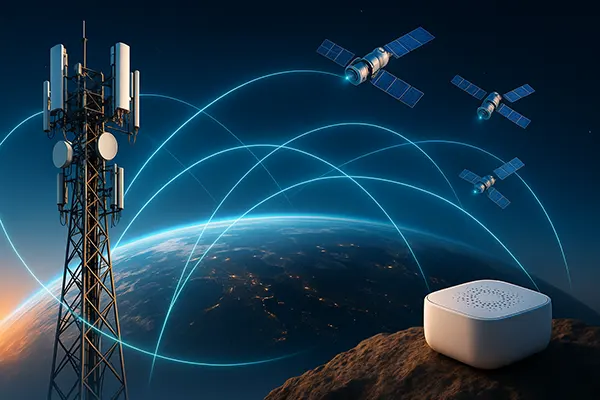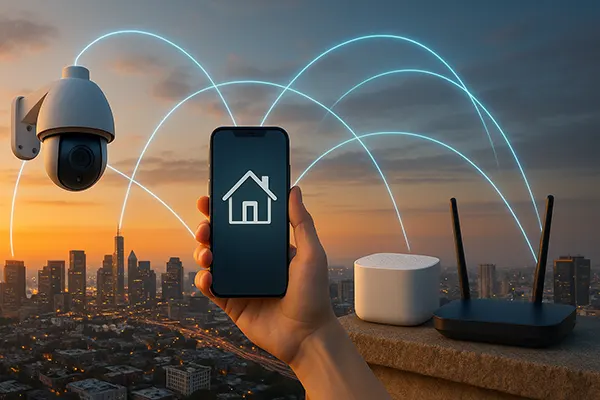
6G + IoT + Satellite Networks: The Architecture of the Future “Internet Everywhere”
The global digital landscape is on the brink of a major transformation, where 6G technologies, Internet of Things (IoT), and next-generation satellite networks are poised to form a unified communications architecture. This emerging synergy aims to provide uninterrupted, low-latency internet access to every corner of the globe, regardless of geographical or infrastructural limitations. As of June 2025, major telecom leaders, space agencies, and researchers are actively shaping this vision through collaborative projects, standardisation efforts, and technological innovations.
6G as the Core Infrastructure for Hyper-Connectivity
Sixth-generation mobile networks (6G) are expected to launch commercially by 2030, but trials and early implementations are already underway in regions like South Korea, the US, and the EU. Unlike 5G, which primarily enhanced mobile broadband and reduced latency, 6G focuses on extreme data rates (up to 1 Tbps), ultra-low latency (under 0.1 ms), and native support for AI integration. It will facilitate real-time data processing and computation-intensive tasks across sectors such as autonomous transport, remote surgery, and industrial automation.
One of 6G’s most important features is its integration with edge computing. Rather than routing data through distant cloud servers, edge processing enables devices to perform tasks locally or via nearby nodes. This is essential for managing the scale of data produced by smart cities, autonomous systems, and robotics. Moreover, 6G’s use of the Terahertz (THz) frequency bands offers unprecedented bandwidth but also requires novel solutions to overcome signal attenuation and coverage challenges.
Global initiatives like the Hexa-X-II project, the China MIIT 6G programme, and the Next G Alliance in the United States are collaboratively defining the standards and deployment frameworks for 6G. These alliances underscore the geopolitical significance of owning the next communication frontier and ensuring interoperability among national ecosystems.
Challenges in Global Standardisation of 6G
The lack of universally agreed-upon standards remains a key challenge in 6G development. While regional consortia are progressing rapidly, discrepancies in spectrum allocation, regulatory frameworks, and technology licensing threaten global interoperability. For instance, spectrum policies vary significantly between the EU and Asia-Pacific regions, complicating equipment manufacturing and certification.
Security concerns are also paramount. As 6G supports critical infrastructure and mass-scale sensor networks, cyber-resilience and encryption technologies must be incorporated at the architectural level. Research in quantum-safe cryptography and distributed ledger-based authentication is increasingly prioritised in standardisation forums like ITU-R and 3GPP.
Lastly, ensuring that developing regions benefit equally from 6G will require coordinated infrastructure investment, spectrum licensing reform, and low-cost device manufacturing strategies. Without inclusive policies, the digital divide risks widening rather than shrinking in the 6G era.
IoT’s Role in Creating a Pervasive Intelligent Environment
The Internet of Things (IoT) is not merely a collection of connected gadgets but an intelligent ecosystem that interacts, analyses, and responds in real time. With over 29 billion connected devices projected globally by 2026 (according to Statista), IoT will serve as the principal consumer and producer of 6G network capabilities. These range from environmental sensors in agriculture to AI-enabled health monitors and industrial robots.
Low-power wide-area networks (LPWANs), previously dominant in IoT connectivity, are now being supplanted by ultra-reliable low-latency communication (URLLC) and massive machine-type communication (mMTC) modules enabled by 6G. These modules can transmit vast amounts of data without battery drainage, making them suitable for long-term deployment in remote or harsh environments.
Edge AI is another critical pillar in IoT’s transformation. By enabling real-time analytics directly on smart devices or gateways, it reduces the need for constant cloud connectivity and ensures operational continuity even in environments with intermittent coverage. This is particularly vital in scenarios such as disaster response or energy grid management.
Security and Ethical Considerations in IoT Growth
As IoT systems collect and process vast volumes of personal, industrial, and environmental data, concerns about privacy, misuse, and surveillance are growing. Ensuring compliance with regional and international data protection laws, such as GDPR in Europe and CPRA in California, is an ongoing challenge for developers and operators.
Many IoT devices are manufactured with minimal security features, making them vulnerable to botnets and denial-of-service attacks. With 6G expanding the attack surface through massive interconnectivity, manufacturers are now under pressure to adopt secure-by-design principles, including firmware integrity, automatic patching, and encrypted data channels.
Additionally, ethical governance frameworks for AI-driven IoT applications are being discussed globally. These frameworks aim to ensure transparency in algorithmic decision-making and accountability in high-risk sectors such as healthcare, defence, and transportation.

Satellite Networks as the Backbone of Global Coverage
While 6G and IoT technologies promise high performance, their effectiveness is limited without universal reach. Satellite communication networks are the missing piece to achieving seamless global internet coverage, especially in rural, maritime, and airborne zones. As of mid-2025, there are more than 8,000 active communication satellites, with mega-constellations like Starlink, OneWeb, and Kuiper expanding rapidly.
These low Earth orbit (LEO) satellites provide low-latency, high-bandwidth connectivity capable of supporting 5G and soon 6G backhaul traffic. Integration between terrestrial and non-terrestrial networks (NTNs) is a major focus of the 3GPP Release 18 standard, which outlines protocols for dynamic routing, seamless handovers, and hybrid infrastructure support.
In addition, newer geostationary and medium Earth orbit satellites are being equipped with regenerative payloads and beamforming capabilities, enabling them to deliver broadband internet with increased flexibility and efficiency. Public-private partnerships, such as the EU’s IRIS² and NASA–SpaceX collaborations, are also reshaping the landscape of accessible satellite-driven internet.
Power, Cost, and Environmental Concerns
Despite their benefits, satellite networks pose certain challenges. Power consumption remains a critical issue, particularly for user terminals and onboard satellite systems. Ongoing research in solar energy storage and RF-efficient communication is essential to make these systems sustainable and cost-effective.
The cost of deploying satellite internet remains relatively high for end-users in low-income regions. Subsidy models, innovative pricing strategies, and community-based access points are being explored to ensure affordability and broader adoption. Universal Service Obligations (USOs) are expected to play a vital role here.
Space debris and orbital congestion are also becoming serious threats. With tens of thousands of satellites planned for launch by 2030, international agreements and regulatory frameworks—such as the UN’s Long-Term Sustainability of Outer Space Activities guidelines—are being revised to ensure responsible and safe use of Earth’s orbits.
